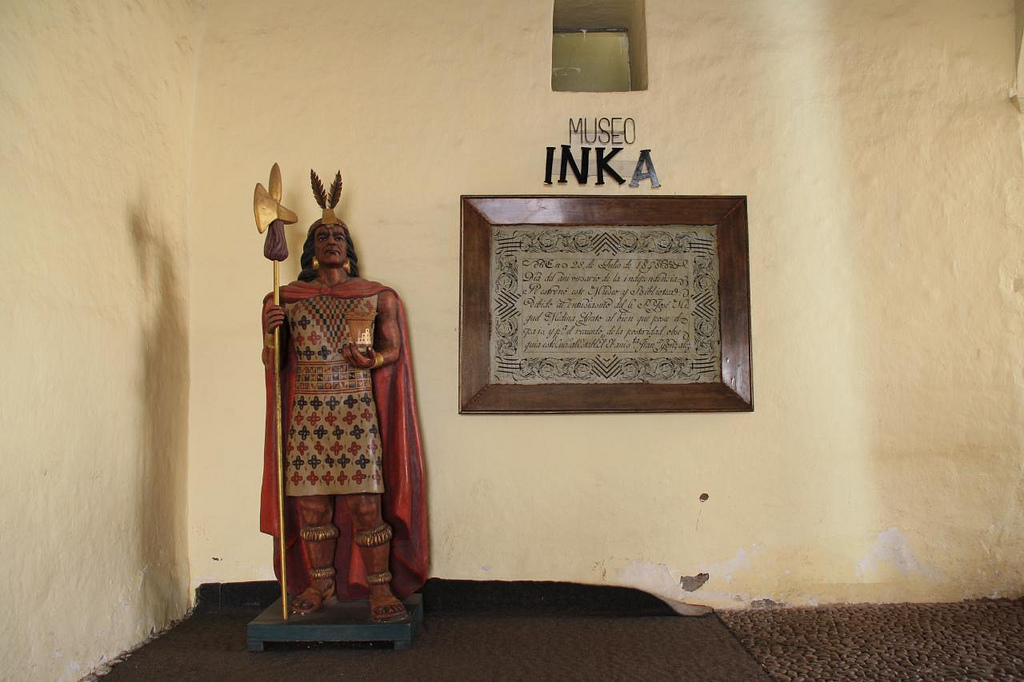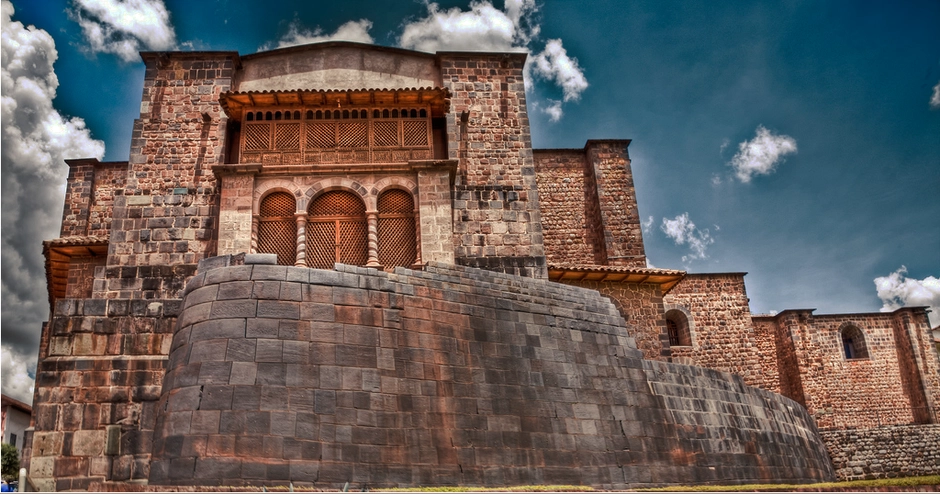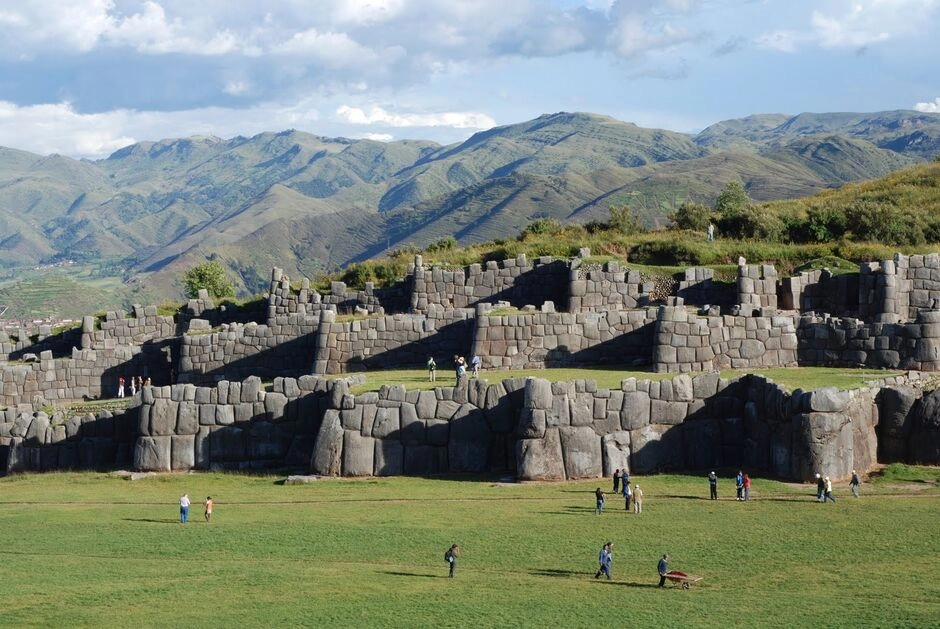
Ready to experience the wonders of Peru? Get in touch, and we’ll help you plan the adventure of a lifetime!

Ready to experience the wonders of Peru? Get in touch, and we’ll help you plan the adventure of a lifetime!

Email Consent Notice
By checking the box, you consent to PeruVisit.com collecting and processing your email address for the purpose of sending newsletters, promotional offers, and information about tours in Peru.
You acknowledge and understand that:
For full details on how we manage personal data, please refer to our Privacy Policy.
The City of Cusco: Unveiling Its History
Uncover the Top 11 Attractions Around Cusco
Best Time to Experience Cusco's Charm
Navigating Your Way to Cusco
Exciting Tours in Cusco
Get ready to embark on a journey through time as we explore the captivating city of Cusco! With a history dating back over 3000 years, this incredible destination was the beating heart of the mighty Inca Empire for two centuries. The Incas believed that Cusco was the "Center of the World, Navel of the Earth," and it's easy to see why. This bustling metropolis served as the capital of Tawantinsuyu, the empire divided into four sections, with Cusco at its core.
Cusco (also spelled as Cuzco, Cusco, Qusqu, Qosqo) is a city with an extraordinary history and the ultimate starting point for all tours to Peru's paramount attraction – Machu Picchu.
As you wander through the streets, you'll discover the secrets of the past, including the site of ancient rituals and sacrifices. Cusco was once home to all the major temples, and important religious ceremonies were held here. With every step, we'll delve deeper into the awe-inspiring achievements of the Inca civilization and gain a new appreciation for their remarkable ingenuity and culture.
But that's not all - Cusco is also the ultimate starting point for tours to Peru's most iconic attraction: Machu Picchu. It's a once-in-a-lifetime opportunity to witness the majesty of this incredible wonder, and it all begins here in this extraordinary city. So come along and discover the magic of Cusco - a destination that's not just a city, but a doorway into another world.

As the Spanish conquistadors set foot in Cusco in 1533, they encountered a thriving city adorned with magnificent temples, bustling squares, and opulent homes belonging to the royal family, nobles, and elite members of society. The river Saphi flowed through the central square, dividing the city into two sections: the Upper (Hanan) and Lower (Urin) Cusco. The layout of Cusco mimicked the silhouette of a revered creature, the puma, with the Sacsayhuaman district, situated at a higher elevation than the rest of the city, serving as the puma's head.
Upon establishing themselves in Cusco, the conquerors reshaped the city, transforming Inca structures into their residences. Spanish houses were erected upon the foundations of former constructions, and the conquistadors repurposed stones from Inca buildings for their temples. This period saw the emergence of a unique style known as "mestizo," a fusion of Andean and Spanish influences. This distinctive blend, evident not only in architecture but also in culture, defines Cusco's character even today.

According to Inca legend, the city was founded by the first Inca, Manco Capac (Manko Qhapaq). According to one version, he emerged from Lake Titicaca with his wife, Mama Ocllo, and journeyed north in search of a place where his golden staff would easily sink into the ground. Wherever he planted his staff, the city of Cusco arose. Another rendition involves four brothers and their four sister-wives emerging from a cave on one of Lake Titicaca's islands. Among the brothers was Manco Capac, who founded Cusco and laid the groundwork for the Inca Empire.
Cusco marks both the genesis and the culmination of the history of the Great Tawantinsuyu Empire. The empire's story commenced here and ultimately concluded in 1572 when Spanish conquistadors beheaded the last representative of Inca rulers, Inca Tupac Amaru, on the city's main square.
Cusco is the central hub of tourism in Peru. It's included in all our tour programs. It's the starting point for the most renowned and captivating excursions to Machu Picchu, the Sacred Valley of the Incas, and set off on the legendary Inca Trail trek. Explore Rainbow Mountain and an array of other thrilling adventures, all originating from here.
Additionally, in Cusco, there are numerous captivating museums.
This museum, also known as the Archaeological Museum of Cusco, houses artifacts that trace Peru's history from pre-Incan civilizations to the Great Empire and the colonial period.
The building housing the museum was constructed on the site of an Incan palace in the early 17th century and belonged to Admiral Francisco Aldrete Maldonado.
The museum is open daily.
Museum Address: 103 Cuesta del Almirante, Cusco, Peru.

During the Inca era, Qoricancha (in Quechua, 'Golden Enclosure') stood as the most opulent temple. Built in honor of the Inca Sun God, Inti, its walls were adorned with gold plates and studded with precious stones. This sacred site held the mummies of esteemed Incas, used in religious ceremonies. Following the Spanish conquest, the Church of Santo Domingo was constructed upon the ruins of the Temple of the Sun. Fortunately, some parts of the original temple have survived and can still be admired today.
The museum is open daily.
Museum Address: Plaza Intipampa (between Av. El Sol and Calle Santo Domingo), Cusco, Peru.

Coca leaves held immense significance during the Inca Empire and continue to remain a vital element in Andean culture to this day. Explore the history, significance, and various applications of coca at this museum.
Museum Address: Calle Suytuccatu 705, San Blas, Cusco, Peru
At an altitude of 10991 feet (3350 meters) above sea level, Cusco sits closer to the heavens and the gods. Stars played a monumental role in the development of all great civilizations, including the Inca Empire. The Planetarium offers captivating evening excursions to a location perfect for stargazing. Discover the astronomy of the Incas, their most significant constellations, and how the daily life of its inhabitants was intertwined with the movement of the stars.
Daily excursions are available, but booking is required.
Planetarium Website: http://www.planetariumcusco.com/
Peru stands as a producer and exporter of cocoa beans. In 2010, at the prestigious Salon du Chocolat in Paris, Peruvian cocoa beans were recognized as the most aromatic and received top honors.
In Cusco's Chocolate Museum, indulge in an immersive experience where you'll learn about the chocolate-making process and savor tastings of both chocolate bars and hot chocolate. The museum hosts chocolate-making workshops and organizes trips to cocoa bean plantations for enthusiasts.
Museum Website: http://www.chocomuseo.com/english/our-locations/cusco-per/
This market is an absolute must-visit! Spend an entire day exploring stalls brimming with an incredible array of goods: souvenirs, alpaca sweaters, vibrant scarves, fresh fruits and vegetables, dozens of varieties of corn and potatoes, coffee, chocolate, cheese, bread, coca leaves sold in bulk from huge sacks, ingredients for traditional medicine - from potency-boosting frogs to various dried insects. And if your stroll leaves you weary, rejuvenate with freshly squeezed juices right before your eyes. Locals flock to San Pedro for lunch: traditional Peruvian dishes are prepared right here and are incredibly affordable.
The market opens at 5:30 AM and operates until 5:30 PM.

The ruins of Sacsayhuaman, Kenko, Tambomachay, and Puka Pukara together form the Archaeological Park of Sacsayhuaman.
Sacsayhuaman, situated on a mountaintop above the main districts of Cusco, was one of the key sectors of the city during the Inca era. If Cusco itself was designed in the shape of a puma, Sacsayhuaman represented the head of the feline. There are varied opinions regarding the purpose of this area. The purpose of this area remains debated among various sources. Long thought to be a military fortification, modern researchers lean towards it being a residential area with opulent noble houses, temples, and squares used for religious ceremonies.
Despite the Spanish dismantling structures and repurposing stones for their churches, the ruins of this area continue to captivate imaginations even today! Walls standing 20-30 feet tall (6-9 meters tall), comprised of impeccably fitted stone blocks, each weighing between 281,600 to 440,000 pounds (128 to 200 tons)! It's estimated that around 20,000 people were involved in constructing this architectural complex.
Annually on June 24th, the Inti Raymi Festival, dedicated to the Sun God, is celebrated here.
Kenko (Kenko, Quenco, Q'inqu)
Situated 3 km from Cusco towards the Sacred Valley. In the Quechua language, the name Kenko means "zigzag" or "twisted," perhaps referring to its serpent-like water channels. Shaped like an amphitheater, Kenko might have served as an altar or a tribune - its exact purpose remains unknown. Similar to other sacred sites, it features an observatory for star observation and tracking equinoxes.
Tambomachay
The name Tambomachay in Quechua translates to "resting place." About 5-6 kilometers from Cusco lies a "water resort" built for the Inca's highest ruler. Tambomachay was dedicated to water worship, showcasing magnificent canals, aqueducts, and cascades. Exceptional engineering skills enabled builders to create two cascades where water flows at an identical rate - place two bottles under them, and they'll fill simultaneously.

The Cristo Blanco statue stands atop a hill overlooking Cusco, adjacent to Sacsayhuaman. It was gifted to Cusco in 1945 by Palestinians as a symbol of gratitude for providing sanctuary during the years of World War II.
The name "Tipon" is a distorted version of the Quechua word "T’impuy," meaning "where the water boils." This place earned its name due to the abundance of underground springs. Researchers believe that the construction was completed during the reign of the Inca ruler Viracocha, yet based on architectural style and building features, Tipon seems closer to the period of Inca Pachacutec.
Tipon served as an agricultural research center, showcasing remarkable geometric precision in its terraced construction. Its magnificent irrigation channels still function today, a significant feat of the Incas — even modern Peruvians haven't mastered water management so ingeniously.
Between harvests on these terraces, festive ceremonies took place, adding a vibrant cultural dimension to the site.
The ruins of Pikillaqta are located about 18.64 miles (30 kilometers) southeast of Cusco. Translated from Quechua, the city's name means "flea city." The name likely serves as a humorous metaphor due to the small size of this place—a "tiny (flea-sized) city." Nonetheless, Pikillacta was a highly significant cultural and administrative center of the pre-Inca Wari culture from the 6th to 9th centuries BC.
Like other Wari cities, Pikillacta was home to rulers, priests, artisans, and farmers. The city's location allowed control over three strategically important regions: the Vilcanota River Valley and the Kisipicanchis Valley.

The Church might appear modest from the outside, but its history dates back to the 16th century, occupying a site that was sacred during pre-Incan and Incan times—hosting rituals and ceremonies. Once inside, the church dazzles with opulence. Often referred to as the Andean Sistine Chapel, it showcases magnificent frescoes by local artist Luis de Riaño, a ceiling adorned with delicate sheets of gold leaf, and a carved Baroque altar—a true treasure trove within the Church of San Pedro de Andahuaylillas.

The Sacred Valley of the Incas, also known as the Urubamba Valley, is a region in the Andean highlands of Peru, located near the ancient Inca capital of Cusco. It spans approximately 37 miles (60 kilometers) and is renowned for its rich history and stunning natural landscapes. This area is a popular tourist destination, offering a glimpse into Inca culture and history, with attractions such as ancient Inca sites and vibrant markets. It is also a gateway to the world-renowned archaeological site of Machu Picchu.



Cusco is the starting point for the journey to Machu Picchu. This awe-inspiring UNESCO World Heritage site voted as one of the New Seven Wonders of the World, offers a once-in-a-lifetime experience. The journey to Machu Picchu from Cusco, the multicultural starting point, is filled with breathtaking landscapes and a sense of wonder that has inspired artists and writers. It's a place where the incredible achievements of ancient civilizations meet the beauty of the natural world, creating an experience that will leave you with cherished memories for a lifetime
Discover more about Machu Picchu
The dry season runs from April to October, with warm days and cold nights. Daytime temperatures can range from 32°F (0°C) to 77°F (25°C), with the coldest months being June and July. Despite the intense sun during the day, temperatures often drop below freezing at night.
The wet season starts in October and ends in March. This period is characterized by warmer nights and heavy rainfall, especially in January and February. Despite the rain, days remain generally warm. Please note that the Inca Trail to Machu Picchu is closed in February.
June is the anniversary of Cusco, with daily events in the city center, making it a vibrant and culturally rich time to visit. However, it's important to note that June tends to be busier with tourists. If you prefer to avoid crowds, consider visiting during the low season of October to March, when there are still festivals and good weather, but fewer tourists.
There are multiple daily flights from Lima to Cusco, with a travel time of about an hour. However, there are no direct bus routes to Cusco, and the shortest journey by bus passes through Nasca, which takes around 24 hours.
Almost all our tours encompass a visit to Cusco, but you can add more attractions to your itinerary. Customize your trip to explore Peru's beauty and culture.
Reach out to us and let's plan the perfect tour that suits both your budget and your vision of an unforgettable adventure.



Get in touch, and we’ll help you plan the adventure of a lifetime!